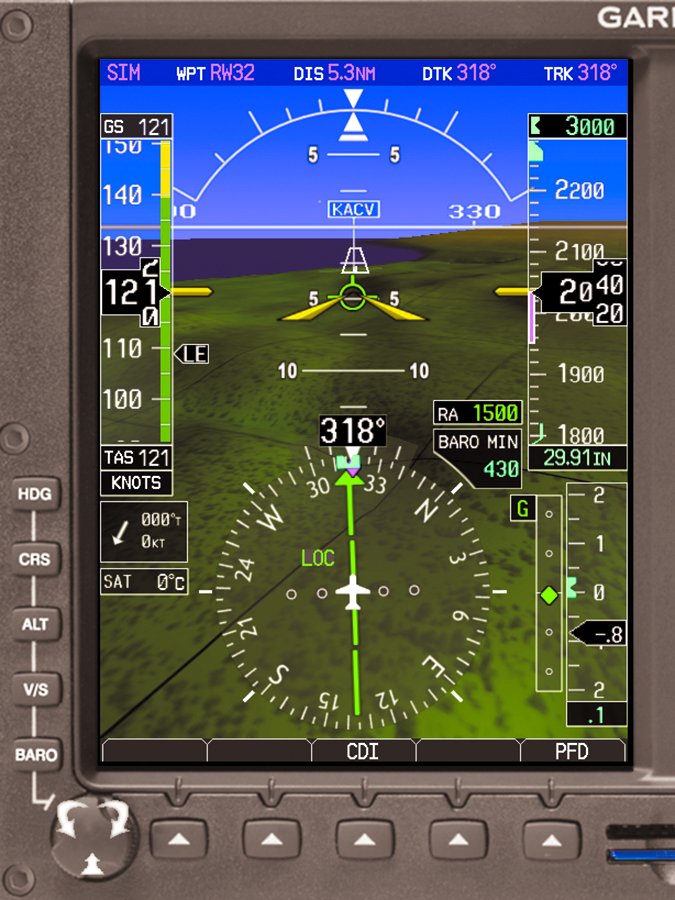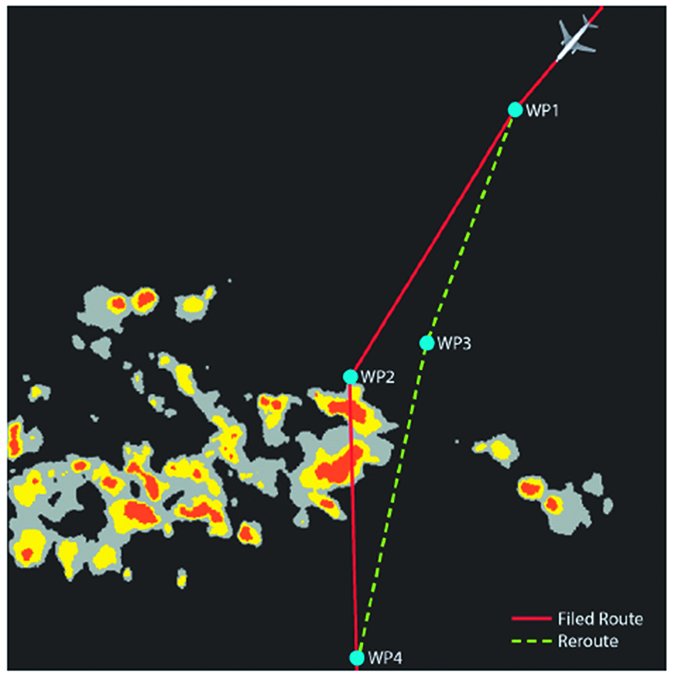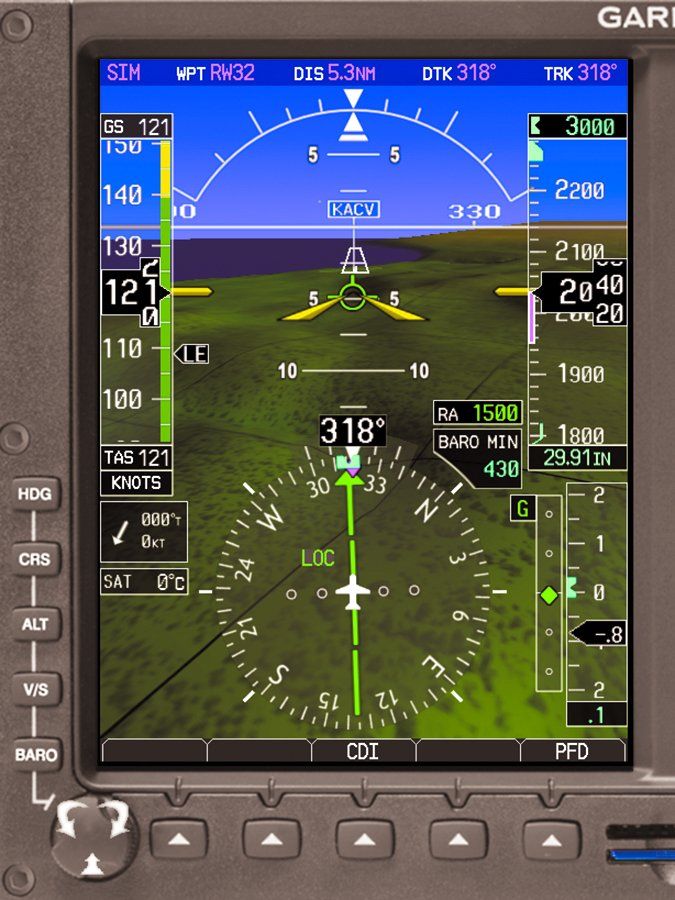Many of us routinely use GPS as sole-source navigation throughout our flights. Congratulations; you’re leveraging the benefits of Performance Based Navigation. That’s good.
We have thousands of RNAV (GPS) approaches, many with vertical guidance, and they’re far safer, more reliable and more accurate than ground-based approaches. We often fly direct or nearly so. All these advances are reshaping the National Airspace System (NAS) and the way we fly IFR, but PBN is still young.
In October 2016, the FAA published the PBN NAS Navigation Strategy 2016. It shows how full-scale deployment of PBN’s many features will be realized in three terms. We are presently in PBN’s near term, 2016-2020, followed by the midterm spanning 2021-2025 and the far term, 2026-2030.
Let’s look inside that paper to get a preview of what to expect in the future.
PBN Defined
PBN is an amalgam of area navigation or RNAV and required navigation performance or RNP. An aircraft meets RNAV requirements when it can fly any desired flight path and meets a specified accuracy 95 percent of the time. Now bolt on something that includes performance monitoring and alerting capability, say, RAIM. Presto! You have PBN.
PBN requires on-board equipment, crew training and minimum required performance in various phases of flight. Whether RNP or RNAV, there is a number suffix that specifies the lateral navigation accuracy in nautical miles expected to be achieved, at least 95 percent of the time. For example, your non-WAAS G1000 offers RNAV 5 en route, scaling down to RNAV 2 in terminal mode, then down to RNAV 0.3 NM in approach mode. A PBN departure or arrival procedure is RNAV 1. En route, the default PBN performance requirement will one day be RNAV 2. However, the PBN report estimates that 79 percent of Part 91 GA is already capable of RNAV 1, 2 and RNP approach capability.
PBN is alive and working at about 2550 airports in the NAS, many with only PBN approaches.
Near Term, 2016-2020
The FAA is focusing on increasing the use of PBN procedures, particularly RNAV STARs. Increased use of PBN procedures will reduce ATC complexity and simplify traffic sequencing. PBN begins to really shine as new, more efficient traffic management and avionics capabilities enter the NAS. Pilots will find ATC more predictable and discover more opportunities to fly efficiently.
At about 3300 smaller airports, safer PBN approaches with LPV and LNAV/VNAV minimums will be commissioned to every qualified runway. Most, but not all, airports will have an IAP to at least one runway end.
Expect ground-based approaches to be replaced by PBN approaches as revised criteria will increase the number of qualified runways. Efforts to include as many approach categories, A-D, as possible will maximize the number of aircraft participating. NDB and VOR approaches will continue to disappear.
The FAA will emphasize PBN pilot training and proper PBN phraseology. Certification standards will include PBN material and satellite-based navigation operations. Vulnerabilities previously identified in pilot management of FMS path automation will be addressed. As PBN unfolds, expect updates to ACs, the AIM and other PBN guidance materials.
In a new move, lower minimums will be available on qualifying approaches with synthetic vision instead of a head-up-display. Enhanced flight vision system (e.g. infra-red) envelopes will increase from their 100 feet HAT minimums all the way to touchdown.
To no one’s regret, circling maneuvers will ultimately be phased out.
En Route

Expect a shift toward a PBN-based environment, such as designation of Class A airspace above FL290 as RNAV 2, to permit more aircraft to fly safely in less airspace. Jet routes and Victor airways will yield to a PBN route structure if needed. Elsewhere, simpler PBN-based point-to-point navigation will be used.
A Notice of Proposed Rulemaking is currently needed for en route Air Traffic Service (ATS) routes. This stumbling block will be removed, reducing implementation time for new ATS routes.
Midterm, 2021-2025
The main mid-term focus will be expediting the delivery, use and maintenance of PBN services. For instance, expect charts to be delivered electronically to your FMS. No more memory cards to copy and insert every 28 days. Real-time delivery will improve coordination with ATC and reduce the time required to distribute procedure changes.
The NAS will become increasingly PBN-centric, and more resistant to GPS service disruptions. Back-office processes and software tools will help deploy and maintain PBN procedures, including an automated tool that periodically reviews procedures to minimize resources needed to maintain them.
About 200 VORs will disappear, and remaining Cat I ILSes will need justification. Ground-based approaches will continue to be replaced by PBN procedures, probably at a greater rate, as will arrival and departure procedures. All NDB approaches will be discontinued in the continental U.S.
En Route
Additional PBN ATS routes and point-to-point navigation will be implemented where beneficial. Where route structure is needed, Jet routes will be replaced by Q-routes at FL180 and above; elsewhere PBN point-to-point navigation will suffice. New T-routes below FL180 will provide transition through or around Class B or C airspace. Victor airways will disappear, except when needed in mountainous terrain and areas lacking radar coverage or if required operationally.
IFR navigation standards throughout the NAS will tighten. All IFR aircraft will be expected to meet RNAV 2 and RNAV 1 performance requirements. By the end of the term, all IFR aircraft will be expected to have RNAV (GPS) with LNAV or better approach capability, although many already do today.
Far Term, 2026-2030
PBN procedures and flexible routing will become the navigational norm. VORs and ILSes in the NAS will be reduced further. VORs in the MON (Minimum Operational Network) will be re-evaluated. (See “GPS Backup Strategies,” February, 2016). By this time, automation tools will directly influence operations. FMS standardization will be complete, helping aircraft fly procedures more consistently. ATC will then optimize traffic flows through PBN procedures. Inefficient vectors will be avoided to improve arrival and departure flow.
Airspace will be redesigned for PBN procedures and its decision-support tools. User preferences will be accommodated, maintaining efficiency. For instance, routing will adjust dynamically to accommodate predicted demand or to route aircraft around weather.
Predictably, the far term will complete a lot of programs initiated earlier, like bringing ground-based infrastructure to an end as remaining conventional arrival and departure procedures are replaced by PBN procedures. The NAS will become PBN-centric.

Yet there remains more to do. The NAS will become managed by time and speed. Aircraft will fly end-to-end using PBN procedures and routing. Separation standards for aircraft flying PBN procedures in IMC will decrease, and move close to the capacity attainable in VMC. Your airline trip will have fewer delays.
Vertically-guided PBN approaches will continue to increase. But, CAT III ILSes will still be supported for backup and the lowest-visibility conditions.
High-flyers will get PBN-based point-to-point navigation via strategically located RNAV waypoints. Expanded data communications will make PBN tools more widely available. With everyone having the same information, operators and controllers will more efficiently accommodate dynamic demand. PBN and data communications will permit ATC to dynamically reroute aircraft around bad weather.
Nearly half of all pilot-controller radio calls are used for routine frequency changes. Data communications will reduce radio workload by at least half.
By 2030, all IFR aircraft will be required to be LPV or LNAV/VNAV-capable.
Electonic Data Communications
Data comm is part of NextGen. It will reduce delays by making pilot-controller communications shorter and more accurate. Here’s how it works.
In the tower, a controller enters departure clearance instructions into a computer and presses a button to electronically queue the information to a cockpit system. The crew reviews it, presses a button to confirm receipt, then another to enter the instructions into the flight management system.
We know the time-honored way of copying a clearance by hand can be fraught with error and tedium, especially if the clearance is complicated. Just one mistake, called a “readback/hearback” error, calls for the instructions to be repeated until they are correct. Even a short departure clearance can take two to three times longer than one communicated electronically.
In bad weather, data comm can enable equipped aircraft to depart quickly before an approaching storm closes the departure window. Non-equipped aircraft can get caught on the ground waiting for the storm to pass. As always in aviation, BEBS rules: Best-Equipped, Best-Served.
Data comm is already in place. Salt Lake City and Houston’s George Bush Intercontinental and William P. Hobby airports received tower departure clearance services in August 2015.
Today, more than 50 towers are equipped, of which about 20 are popular with GA. Though largely aimed at the airlines, expect data comm to filter down to GA in the mid to far term. Expansion into en route airspace is the next phase of the program and will begin in 2019.
Resiliency
For most GA aircraft, the backup for GPS will be the Minimum Operational Network. Simply put, about 650 VORs will be re-tasked from providing a route structure into being a resilient navigation method for non-DME GA aircraft.
Business and commercial aircraft will use dual-DME RNAV coverage down to 18,000 feet (24,000 feet in mountainous terrain) and in terminal phases to support PBN operations. Operators having but one DME will be able to use VOR as an authorized second form of navigation. By 2025, dual DME coverage with RNAV 1 navigation will be extended down to the largest airports.
During the far term (2026-2030) and beyond, the FAA will research the best way to provide Alternate Positioning, Navigation and Timing, that is, an alternative to GPS. Choosing the best solution is a key issue still being researched.
A Peek Into the Back Office
Decision-support tools help assure more efficient traffic flows. One example is terminal-based flow management. Merging and spacing tools designed for the PBN environment must also support traditional controller techniques such as vectors, level-offs and speed assignments to optimize capacity. In the future, advanced merging and terminal-spacing tools will be provided through Ground-based Interval Management-Spacing. GIM-S will combine en route flow management with near-airport approach sequencing to permit smooth planning and execution of flow strategies well before top of descent, hopefully eliminating the dreaded “Give me good rate down to 5000” when you’re at 15,000.

En Route Automation Management, or ERAM, is already operating in all 22 ATC centers. It manages high-altitude traffic. A new system, Standard Terminal Automation Replacement System is being rolled out to make best use of PBN procedures.
All of PBN rests on ADS-B Out. One benefit of equipping is that in doing so, operators also gain the benefits of the PBN-centric airspace system.
Data Communications
As more flights begin to fly PBN procedures, data communications will become an essential link between pilots and ATC. Data comm is still in its early days, but we will see it in our cockpits somewhere in the mid to far term.
Already in use at several airports, data comm directly links ground automation and flight deck avionics to convey safety-of-flight clearances, instructions, traffic flow management, pilot requests and assorted reports.
Communication errors will all but disappear and productivity will increase by minimizing radio time. PBN-generated airborne reroutes will efficiently allow uploading of lengthy route messages, making it more practical to issue point-to-point routes.
Cybersecurity
Given ADS-B, GPS navigation and digital air/ground communications, cybersecurity steps will be implemented to ensure the integrity of the PBN-centric NAS. The FAA is developing a digital authentication standard for the mid to far term to ensure that digital traffic is tamper-proof.
Summing Up
Several themes recur throughout the PBN document. They include PBN-everywhere, community involvement, inclusion of GA and all stakeholders, and scalability, with structured airspace only where needed and simpler PBN-based en route navigation elsewhere.
PBN has been good for us. And it’s only going to get better.
Fred Simonds, CFII, thinks PBN is the greatest thing since we learned how to make lift. See his web page at www.fredonflying.com.





